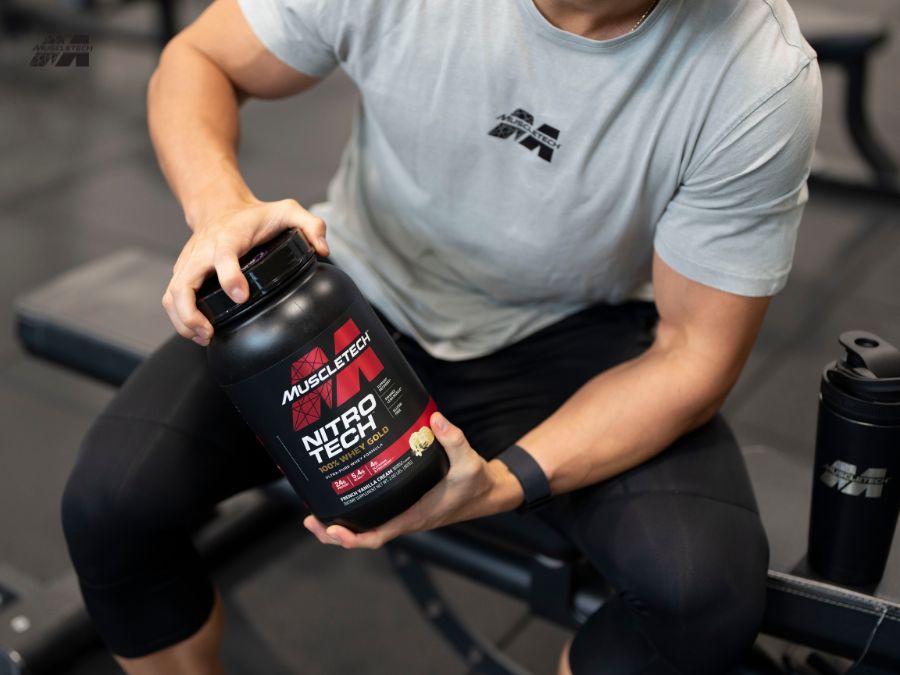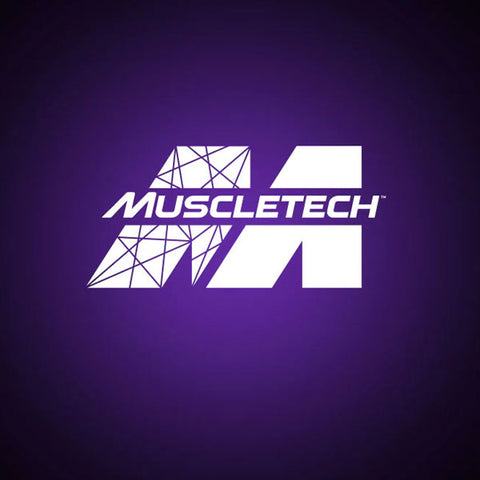There is no one-size-fits-all answer regarding your breakfast of choice or nutrition plan. Generally, whole foods are optimal for your regular meals, but there are instances where a protein shake is a good option.
For instance, they are better than eating fast food, refined sugar snacks, or skipping breakfast altogether. A protein shake for breakfast can offer a nutritious solution if you are in a hurry, work the early shifts, or need to simplify your nutrition.
They can be particularly beneficial if you struggle to get other micronutrients in your diet, as they can be seamlessly blended into a smoothie.
In this article, we'll review the pros and cons of protein shakes for breakfast so that you can decide whether they are best for your needs.
Table of content
Benefits of Having A Protein Shake For Breakfast
Below are the benefits of opting for a protein shake for breakfast.
1. Quick and Convenient
Convenience is one of the most common reasons for choosing a protein shake over a traditional breakfast.
In today's society, it's common for people to need to be at work or school early in the morning. Which makes preparing an entire meal challenging.
It may even be counterproductive if your schedule would necessitate losing sleep to make breakfast.
Blending a protein shake into a smoothie can be an easy way to get the nutrition you need to start your day.
Mix your protein and other ingredients into a blender or shaker with water, milk, or a milk alternative, and you will have a nutritious breakfast in seconds.
2. Keeps You Satiated
Starting your day with a high-protein meal can be great for keeping you full throughout the day.
Unlike carbohydrate-rich meals, a breakfast high in protein can reduce the release of the hunger hormone Ghrelin, which helps you feel full. (1)
Staying full until your next meal or throughout the day can go a long way in preventing unhealthy snacking, improving your focus, and enhancing your mood.
All of these go a long way in maintaining a healthy weight and optimizing performance in and outside the gym.
3. Keeps Blood Sugar Stable
Similar to how protein in the morning helps keep you satiated, it can also help stabilize your blood sugar as opposed to breakfast options high in refined sugar and carbohydrates.
Protein is slower to digest than carbohydrates and, therefore, helps create a sustained release of glucose into the bloodstream.
This steady stream of blood sugar helps you avoid fatigue, feelings of sluggishness, and decreases in mental acuity without the need for caffeine or snacking. (2)
4. Helps with Weight Loss
Emphasizing protein for breakfast, such as in a protein shake, can help boost your weight loss efforts.
As previously mentioned, diets high in protein help regulate hunger and blood sugar, but they also increase metabolic rate through the thermodynamic effect of food (TEF).
TEF are the calories that your body expends to metabolize the food you eat. Each macronutrient that you consume (protein, fats, and carbohydrates) has its own TEF.
Protein has the highest amount because it is the most difficult to metabolize. (3)
Thus, increasing the amount of protein in your breakfast via a protein shake or smoothie can set you up for a day of accelerated calorie burning and, ultimately, weight loss.
5. Promotes Fitness and Muscle Building
If your fitness goals include strength and muscle building, starting your day with a protein-packed shake or smoothie might be ideal.
Protein is made up of amino acids, which are the building blocks that repair and grow new muscle tissue after your workouts. Amino acids are categorized as essential and nonessential amino acids.
The nonessential amino acids can be synthesized by the body, but the essential amino acids cannot and must be consumed in the diet. (4)
Starting your day with a protein-rich shake can help you get the essential amino acids you need to reach your fitness goals when combined with a resistance training program.
6. Versatile for Dietary Preferences
If you have specific dietary preferences, such as vegan, vegetarian, ketogenic, or gluten-free, then certain protein powders can help you meet your protein requirements.
Diets prioritizing plant-based food sources or avoiding animal products require careful attention to ensure they contain the essential amino acids to support muscle mass. (3)
But, by starting your day with a protein shake that aligns with your preferences and includes the essential amino acids you need, you can avoid under-consuming protein.
Additionally, if you require more protein than the typical person, you can facilitate increased protein intake by starting your day off with a high-protein shake.
Downsides of Having a Protein Shake For Breakfast
1. Nutrient Imbalance
Protein shakes can offer a convenient and quick way to consume a high-protein breakfast. However, if not accounted for, you can miss nutrients that should also be included in your breakfast. Many protein shakes minimize carbohydrates and fat content to improve absorption rates and keep calories within an acceptable range.
Doing so can leave you undernourished for the day, especially if you plan on working out before your next meal.
Carbohydrates are essential for exercise performance and are the brain's preferred fuel source.
Fat helps with satiety, hormone production, and the absorption of critical vitamins and minerals.
Fiber is also essential for your diet for several reasons, including improved digestion, gut health, and cholesterol levels.
Thus, a balanced breakfast with a protein shake should include these nutrients by adding fruit, vegetables, nuts, seeds, and other oils.
2. Over-Reliance on Supplements
A trap that is easy to fall into is an over-reliance on shakes and supplements in your diet because of how tasty and convenient they can be.
Although I rely on and enjoy a good protein shake or smoothie as much as the next person, it's important to include them as a supplement.
They should augment your diet rather than replace it so that you can reap the benefits that whole foods offer, like antioxidants, fiber, vitamins, and minerals.
Overconsumption of lower-quality supplements may even pose health risks, such as intake of heavy metals, artificial additives, and fillers.
To avoid this, use high-quality protein powders such as Nitro-Tech to fill the gaps or augment your nutrition rather than replace it.
3. Lack of Chewing In The Digestive Process
The last downside of choosing a protein shake for breakfast is that drinking your nutrition skips a vital part of the digestive process.
Digestion occurs in three phases: the cephalic, gastric, and intestinal phases. All of these are important for fully digesting and absorbing the food you eat.
Chewing takes place in the cephalic phase. It helps to break down the food you eat and signal to the body that food is entering the system. This signal triggers the release of digestive enzymes. (5)
In addition to potential subpar digestion, shakes and smoothies may promote overeating, as they are more easily consumed and may not cause the same level of satisfaction post-meal.
Considerations Before Making Protein Shakes Your Breakfast Choice
Before incorporating protein shakes into your breakfast routine, consider these factors:
1. Personal Dietary Needs and Goals
If you are going to have protein shakes for breakfast, consider how much protein you need. For fitness goals, daily protein intake should be between 1.2-3.0 g/kg of body weight.
To determine how much protein you should have for breakfast, divide the total daily protein amount by the number of daily feedings.
2. Quality of Protein Shake Ingredients
Your diet is not something you want to pinch pennies on. Investing in your health will yield dividends for years to come.
So, if you want a protein supplement to augment your diet and optimize your breakfast, choose high-quality protein supplements from reputable brands.
A high-quality supplement won't have unnecessary fillers and will contain fast-absorption whey or casein protein. A great option is Muscle-Tech's Nitro-Tech protein.
3. Adding Other Items to the Shake
To avoid the harmful effects of undereating important other nutrients, bolster your protein shake with carbohydrates, fat, micronutrient sources, and fiber.
These could come from fruit, vegetables, various liquid options, nuts, seeds, etc.
Your Best Option For Protein Shakes For Breakfast
NitroTech
Nitro-Tech is a powerful protein supplement that helps you reach your protein goals by providing 30 grams of whey protein and all the essential amino acids you need.
It provides high-level whey protein and peptides for fast absorption, making it ideal as a meal enhancer or post-workout shake.
To have NitroTech in a breakfast protein shake, mix it with water or milk, add fruit or carbohydrates of choice, and add fat and fiber sources. You'll be on your way with a protein-packed meal.
Final Thoughts on Protein Shakes For Breakfast
Deciding whether or not to have a protein shake for breakfast will ultimately depend on your goals, preferences, and lifestyle.
As you can see, there are pros and cons to opting for a protein shake for breakfast. Whole foods are the best option for your diet as they provide additional benefits that supplements may not.
However, using high-quality supplements to help you make better dietary choices is where protein shakes for breakfast will shine.
If you determine that a protein shake is right for your first meal of the day, pick a high-quality protein powder like Nitro-Tech.
Then, add the other elements mentioned above to turn your protein shake into a nutrition-packed smoothie.
References:
- Blom, W. A., Lluch, A., Stafleu, A., Vinoy, S., Holst, J. J., Schaafsma, G., & Hendriks, H. F. (2006). Effect of a high-protein breakfast on the postprandial ghrelin response. The American journal of clinical nutrition, 83(2), 211–220. https://doi.org/10.1093/ajcn/83.2.211
- Franz M. J. (1997). Protein: metabolism and effect on blood glucose levels. The Diabetes educator, 23(6), 643–651. https://doi.org/10.1177/014572179702300603
- Aragon, A. A., Schoenfeld, B. J., Wildman, R., Kleiner, S., VanDusseldorp, T., Taylor, L., Earnest, C. P., Arciero, P. J., Wilborn, C., Kalman, D. S., Stout, J. R., Willoughby, D. S., Campbell, B., Arent, S. M., Bannock, L., Smith-Ryan, A. E., & Antonio, J. (2017). International society of sports nutrition position stand: diets and body composition. Journal of the International Society of Sports Nutrition, 14, 16. https://doi.org/10.1186/s12970-017-0174-y
- Jäger, R., Kerksick, C. M., Campbell, B. I., Cribb, P. J., Wells, S. D., Skwiat, T. M., Purpura, M., Ziegenfuss, T. N., Ferrando, A. A., Arent, S. M., Smith-Ryan, A. E., Stout, J. R., Arciero, P. J., Ormsbee, M. J., Taylor, L. W., Wilborn, C. D., Kalman, D. S., Kreider, R. B., Willoughby, D. S., Hoffman, J. R., … Antonio, J. (2017). International Society of Sports Nutrition Position Stand: protein and exercise. Journal of the International Society of Sports Nutrition, 14, 20. https://doi.org/10.1186/s12970-017-0177-8
- Pandol, S. J. (2010). The exocrine pancreas. San Rafael, CA: Morgan & Claypool Life Sciences. Regulation of whole-organ pancreatic secretion. Available from https://www.ncbi.nlm.nih.gov/books/NBK54132/








